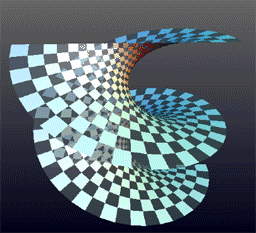I would appreciate it if someone could explain the difference(s) between a
$C^\infty$ and a $C^\omega$ surface embedded in $\mathbb{R}^3$.
I ran across these terms in M. Berger's Geometry Revealed book (p.387).
The context is: There are examples of two different $C^\infty$ compact surfaces
that are isometric, but no known examples for "two real analytic (class $C^\omega$)"
surfaces which are isometric. Thanks!
Clarification. Thanks to Mariano and Willie for trying to help—I appreciate that!
It is difficult to be clear when you are confused :-).
Let me try two more specific questions: (1) Where does the $\omega$ enter into
the definition of $C^\omega$? Presumably $\omega$ is the first infinite ordinal.
(2) What I'm really after is the geometric "shape differences" between $C^\infty$ and $C^\omega$. The non-analytic but smooth functions I know smoothly join, say, an exponential to a straight line, but geometrically they look just like smooth functions. I guess I don't understand what the constraints of real-analyticity imply geometrically. Maybe that's why this isometric question Berger mentioned is unsolved?!
Addendum. Here are Ryan's two functions:

Left: $C^\infty$ but not $C^\omega$. Right: $C^\omega$.

Best Answer
To Clarification (1): I think $\omega$ is there just to indicate that the smoothness is "more than $C^\infty$", and I don't think it has any substantial connection to the first infinite ordinal.
(2): Analytic surfaces are much more rigid than smooth surfaces. For example, you can choose any open set on a smooth surface and do surgery so that only the chosen set is affected. For analytic surfaces you knock on a point, you disturb the entire surface. Smooth surfaces are made of sheet metal, while analytic surfaces are ceramic. I reserve rubber for topological surfaces.